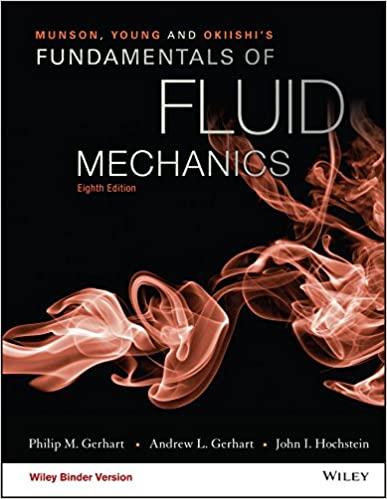As winds blow past buildings, complex flow patterns can develop due to various factors such as flow
Question:
As winds blow past buildings, complex flow patterns can develop due to various factors such as flow separation and interactions between adjacent buildings. Assume that the local gage pressure, \(p\), at a particular location on a building is a function of the air density, \(ho\), the wind speed, \(V\), some characteristic length, \(\ell\), and all other pertinent lengths, \(\ell_{i}\), needed to characterize the geometry of the building or building complex.
(a) Determine a suitable set of dimensionless parameters that can be used to study the pressure distribution.
(b) An eight-story building that is \(100 \mathrm{ft}\) tall is to be modeled in a wind tunnel. If a length scale of 1:300 is to be used, how tall should the model building be?
(c) How will a measured pressure in the model be related to the corresponding prototype pressure? Assume the same air density in model and prototype. Based on the assumed variables, does the model wind speed have to be equal to the prototype wind speed? Explain.
Step by Step Answer:

Munson Young And Okiishi's Fundamentals Of Fluid Mechanics
ISBN: 9781119080701
8th Edition
Authors: Philip M. Gerhart, Andrew L. Gerhart, John I. Hochstein





